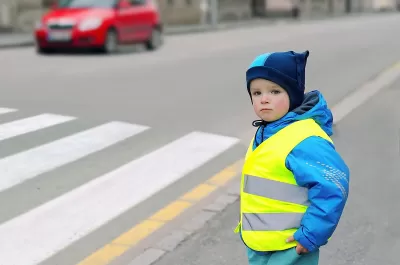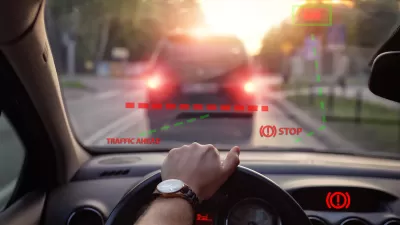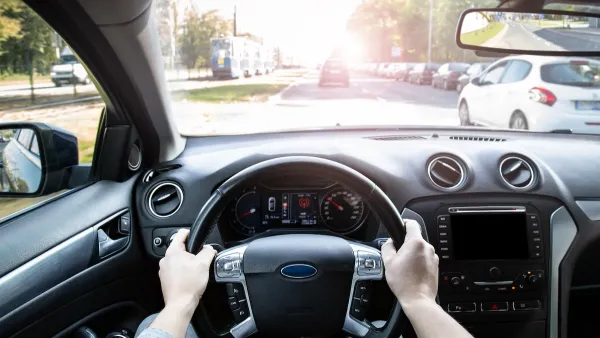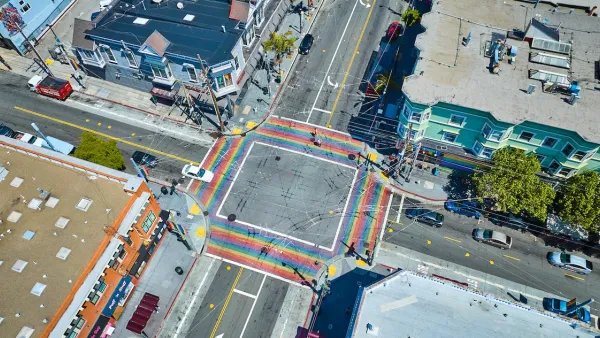The automatic braking systems on two major car models failed to stop for pedestrians wearing reflective strips in a test.

New research from the Insurance Institute for Highway Safety indicates that automatic braking systems on Honda and Mazda cars fail to recognize pedestrians wearing reflective clothing, reports Gersh Kuntzman for Streetsblog USA.
“In the study, researchers outfitted an adult-sized dummy black clothing, one in white clothing, one with a reflective jacket and one with a reflective strips in a configuration similar to those worn by roadway workers (though their safety gear is generally bright orange or yellow rather than black).” In test conditions with various types of lighting, Honda and Mazda vehicles hit crash test dummies wearing reflective strips, and the Honda car hit the dummy wearing a reflective jacket. A Subaru Forester model stopped for most of the dummies in the test.
The study shows that wearing reflective clothing — often the only safety advice given to pedestrians — won’t always protect people walking. According to researcher David Kidd, “People are able to perceive what's out on the roadway and make quick decisions when things get confusing or are uncertain. And these technologies are not as adept at doing those type of things as we are.”
FULL STORY: Alarming Report Shows that Two Auto-Braking Systems Can’t See People in Reflective Garb

Maui's Vacation Rental Debate Turns Ugly
Verbal attacks, misinformation campaigns and fistfights plague a high-stakes debate to convert thousands of vacation rentals into long-term housing.

Planetizen Federal Action Tracker
A weekly monitor of how Trump’s orders and actions are impacting planners and planning in America.

In Urban Planning, AI Prompting Could be the New Design Thinking
Creativity has long been key to great urban design. What if we see AI as our new creative partner?

King County Supportive Housing Program Offers Hope for Unhoused Residents
The county is taking a ‘Housing First’ approach that prioritizes getting people into housing, then offering wraparound supportive services.

Researchers Use AI to Get Clearer Picture of US Housing
Analysts are using artificial intelligence to supercharge their research by allowing them to comb through data faster. Though these AI tools can be error prone, they save time and housing researchers are optimistic about the future.

Making Shared Micromobility More Inclusive
Cities and shared mobility system operators can do more to include people with disabilities in planning and operations, per a new report.
Urban Design for Planners 1: Software Tools
This six-course series explores essential urban design concepts using open source software and equips planners with the tools they need to participate fully in the urban design process.
Planning for Universal Design
Learn the tools for implementing Universal Design in planning regulations.
planning NEXT
Appalachian Highlands Housing Partners
Mpact (founded as Rail~Volution)
City of Camden Redevelopment Agency
City of Astoria
City of Portland
City of Laramie





























